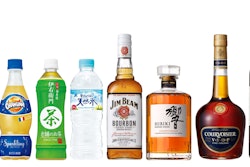The ULS (Use Less Stuff) Report has published “A Study of Packaging Efficiency As It Relates to Waste Prevention.” As part of the study, more than 300 containers in 56 grocery categories were examined to deliver a given amount of product. Study methodology gave credit for source reduction, recyclability, and use of recycled materials. The methodology, findings, and conclusions were reviewed by the Laboratory of Manufacturing and Sustainability at the University of California, Berkeley.
According to ULS Report Editor Robert Lilienfeld, “There are three legs on the sustainability stool—economic, environmental, and social. The study clearly shows that, over the past 20 years, packaging has evolved to more effectively deliver on these sustainability requirements.”
Key learnings include:
- In line with the EPA’s waste prevention hierarchy, source reduction, or lightweighting, continues to play a primary role in reducing packaging discards, thus conserving materials and energy and reducing greenhouse gas emissions. Plastics, especially in the form of film and flexible pouches, play an important role in significantly reducing discards per unit of product delivered.
- Recovery for recycling plays an increasingly important role in the effort to reduce packaging discards and overall solid waste levels. This is especially true for steel and aluminum cans, beverage bottles made from PETE, high-density polyethylene, and glass, and paperboard cartons. These materials are collectively recycled at a 34.2% rate today, up significantly versus 25.7% in 2005. In fact, the level of primary packaging recycling is now equal to the recovery rate for total waste, and is the primary reason that the total recovery rate increased from 31.4% in 2005 to 34.3% today.
- Social trends toward more active, healthier lifestyles increase the need for products that provide convenience and weight control solutions. Resulting packages can lead to inefficiencies, as they require smaller sizes or the increased functionality needed to deliver ready-to-eat, ready-to-serve, and out-of-home product solutions. Says Lilienfeld, “In general, the environmental impact on food is up to 10-times greater than the impact of its packaging. So a bit more portion control or ready-to-eat food packaging can actually reduce waste, as these packages ensure that the food inside is actually eaten, rather than thrown away.”























